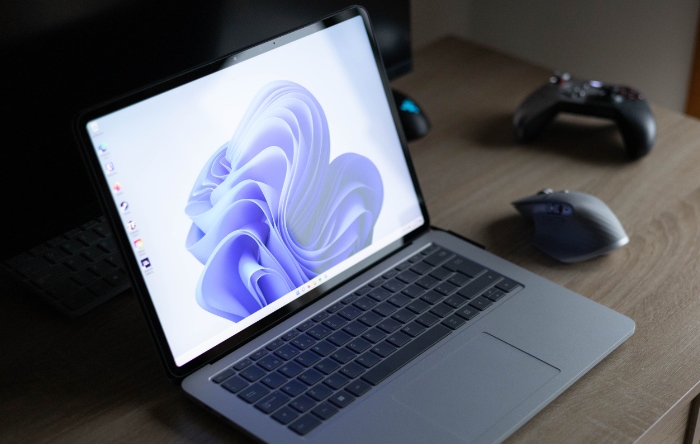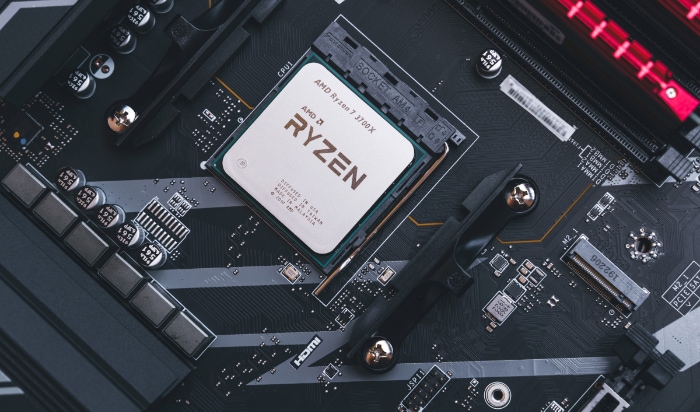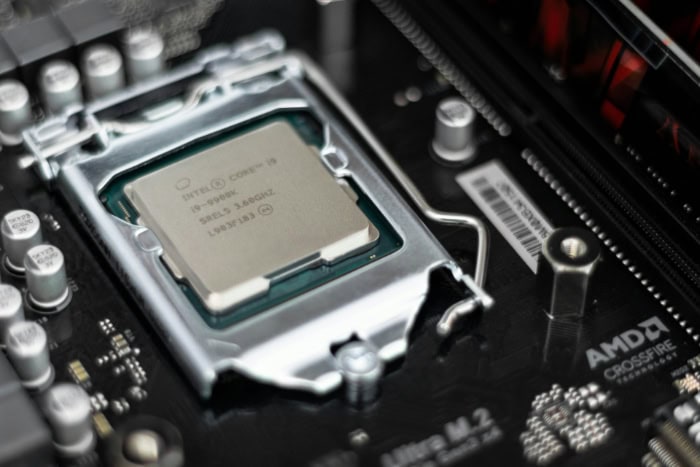32-bit vs. 64-bit: Which One Matches Your Needs Best?

Ever wondered why some programs work on your friend's laptop but not on yours, or why your computer sometimes struggles with big files? The answer often comes down to its 32-bit or 64-bit architecture. This simple number shapes everything from how much memory your PC can use to the types of software it supports.
As hardware and software standards evolve, grasping this concept can help you get the most out of your device, avoid pesky compatibility issues, and make smarter upgrade choices.
Architectural Fundamentals
The architectural design of a CPU shapes much of what a computer can achieve, influencing everything from memory management to how quickly tasks are completed. Among the most significant architectural differences are those between 32-bit and 64-bit systems.
Each handles data and memory in fundamentally different ways, directly impacting performance, compatibility, and upgrade potential.
Memory Addressing
Memory addressing determines how much RAM a processor can recognize and use. A 32-bit architecture is limited to addressing a maximum of 4 gigabytes (GB) of RAM.
For many older applications, this was sufficient, but as software became more demanding and files grew larger, this limit became a notable bottleneck. Running into the 4 GB ceiling causes slowdowns, especially when multitasking or working with media-rich programs.
In contrast, a 64-bit processor features an address space that is astronomically larger, supporting up to about 18.4 million terabytes (TB) of memory.
While no current consumer device approaches that amount, the additional headroom guarantees that future expansion won’t be hindered by artificial limits. High-end workstations and gaming rigs can benefit from 16, 32, or even 64 GB of RAM, taking full advantage of the capabilities offered by 64-bit systems.
Memory-intensive applications, such as video editing software or virtual machines, perform much more efficiently when not constrained by memory limitations.
Data Processing
How a CPU processes data plays a major role in the speed and power of your computer. In a 32-bit system, the processor works with data chunks that are 32 bits wide per clock cycle.
This means each calculation or data movement happens in smaller increments, which can slow down tasks requiring large amounts of data or complex calculations.
On the other hand, a 64-bit architecture processes data chunks that are twice as large in a single cycle. This capacity significantly boosts performance, especially in modern applications designed to take advantage of wider data pathways.
Complex scientific computations, high-resolution graphics rendering, and encryption tasks see noticeable gains in both speed and efficiency. Even routine activities, such as running multiple programs at once, benefit from the enhanced data handling of 64-bit processors, resulting in a smoother and more responsive experience.
The difference in data processing power is a driving factor behind software and operating system developers focusing on 64-bit compatibility. As applications grow in complexity and size, having a system that can natively process larger blocks of data is essential for keeping up with modern computing demands.
Performance Comparison

Performance has always been a deciding factor when selecting computer hardware or upgrading your system. The difference between 32-bit and 64-bit architectures plays a significant role in determining how efficiently your computer operates, especially during complex or resource-intensive tasks.
The transition to 64-bit systems brought with it changes that affect speed, multitasking, and how well scientific or technical programs run.
Speed and Efficiency
A major advantage of 64-bit processors comes from their expanded set of registers, which are the tiny storage locations the CPU uses for immediate data processing. With more registers available, a 64-bit CPU can store and access larger amounts of data on the fly, reducing the need to fetch information repeatedly from slower system memory.
This design reduces latency and speeds up execution times, especially in tasks that rely on heavy mathematical operations or frequent data manipulation.
Handling large integers and complex calculations natively also sets 64-bit systems apart. Scientific computing, engineering simulations, and graphics editing often demand operations involving big numbers and vast datasets.
A 64-bit processor can process these numbers in a single step, avoiding the extra overhead required on a 32-bit CPU. This native support results in quicker calculations and more efficient data processing, making modern software and games noticeably smoother on compatible hardware.
Enhanced speed and efficiency are not just limited to specialized applications. Everyday activities like running security software, web browsers, or even multitasking benefit from the architectural improvements provided by a 64-bit system.
As software continues to evolve, developers increasingly design their programs to take full advantage of these capabilities, leading to a more responsive and enjoyable user experience.
Trade-offs
While the performance improvements of 64-bit systems are undeniable, some trade-offs deserve attention. One of the most prominent is higher memory consumption.
Applications running on a 64-bit operating system typically use more memory, sometimes up to 50 percent more than their 32-bit counterparts. The reason for this increase lies in the larger memory addresses and data structures required by a 64-bit environment.
While efficient for handling large datasets, this can lead to unnecessary overhead for simpler tasks.
For users with older hardware or limited RAM, these higher memory requirements may present challenges. Computers designed with only 2 or 4 GB of RAM may actually perform better using a 32-bit operating system, simply because the memory overhead is lower.
Attempting to run a 64-bit operating system on machines with minimal RAM can result in sluggish performance, longer load times, and reduced responsiveness.
Upgrading to a 64-bit system is best paired with adequate hardware, namely increased RAM and a modern processor, to truly benefit from the advances in speed and efficiency. For those with older systems, careful consideration is needed before making the switch, as not every computer will be able to fully utilize the strengths of a 64-bit architecture without upgrades.
Software and Hardware Compatibility

Compatibility between software and hardware often determines how seamlessly programs run and how future-proof a device might be. The shift from 32-bit to 64-bit architectures has prompted changes in how operating systems handle applications, as well as how they interact with older or legacy software.
Backward Compatibility
Modern 64-bit operating systems are designed to be flexible, often allowing users to continue running 32-bit applications. This is typically achieved through a built-in emulation or compatibility layer that translates instructions from older applications so they can function correctly within a 64-bit environment.
Users can still enjoy older games or productivity tools without needing to revert to outdated hardware, making transitions less disruptive. However, the reverse is not true; 32-bit systems are unable to run 64-bit software at all.
The architecture of a 32-bit processor simply cannot process the wider data paths and instructions required by 64-bit applications. Attempting to install 64-bit software on a 32-bit system will result in errors or failure to launch.
Legacy Software Challenges
Legacy software sometimes presents unique complications, especially when dealing with very old programs built for 16-bit or early 32-bit systems. Running these apps on a modern computer can be difficult or even impossible without special tools, as compatibility layers may not always extend far enough to support outdated coding practices.
In some cases, users must rely on virtualization or specialized emulators to access these programs, which can introduce additional technical hurdles.
The technology industry has been moving forward, with current operating systems like Windows 11 fully phasing out support for 32-bit versions and applications. This shift signals an industry-wide move toward 64-bit computing, making it crucial for users to ensure software is up to date and compatible with newer hardware.
Those who rely on older programs may need to seek updates or consider alternatives, as support for legacy applications continues to decline. The focus now is on leveraging the full power of modern 64-bit systems, which means both hardware and software are evolving hand-in-hand.
Security Enhancements

Security is a vital concern for any computer user, shaping how safe personal data and system resources remain in the face of modern threats. The move from 32-bit to 64-bit computing brought significant improvements in this area, drawing upon architectural advances and specialized hardware features.
As attackers devise more sophisticated methods, the adoption of 64-bit systems gives both users and organizations a stronger foundation for defending against malware, exploits, and unauthorized access.
Hardware-Level Protections
Modern 64-bit processors have introduced sophisticated security measures to guard against malicious software attacks. One of the most important is Data Execution Prevention, or DEP.
DEP protects critical memory areas by restricting which regions of memory can execute code, making it much harder for attackers to run harmful scripts or programs in unintended locations. This approach blocks a common technique used by many kinds of malware, raising the difficulty level for hackers.
Address Space Layout Randomization, or ASLR, further strengthens defenses. ASLR works by randomizing the placement of system and program components within memory, so attackers cannot predict where their malicious code will land.
Since exploits often rely on guessing or knowing exact memory locations, ASLR makes these attacks far less likely to succeed. Both DEP and ASLR are standard on modern 64-bit operating systems, bringing a direct upgrade to everyday protection.
Vulnerability Reductions
Expanded memory space in 64-bit architectures adds another valuable layer of defense. With a much larger pool of possible memory addresses, pinpointing the exact location of exploitable code becomes a far greater challenge for would-be intruders.
Exploits that were once feasible on tightly-packed 32-bit systems become unreliable or even obsolete in a 64-bit environment.
The security benefits provided by broader address space and advanced hardware protections have set a new standard for safeguarding computers. Users gain not only better performance but also greater peace of mind, knowing their systems offer more robust resistance to common security threats.
As more of the world shifts to 64-bit computing, these enhancements are increasingly regarded as essential for safe and stable operation.
Practical Decision-Making

Real-world needs often drive the choice between 32-bit and 64-bit computing, with factors like daily tasks, performance goals, and available hardware shaping the best path forward. Selecting the right architecture ensures that your system runs smoothly, your favorite programs launch without trouble, and you get the most out of your technology investment.
Use Case Scenarios
Not every computer job demands cutting-edge power. For basic tasks like web browsing, checking email, or editing documents, a 32-bit system often performs adequately.
Lightweight office work, legacy applications, and simple software packages don’t require large memory pools or the latest processing capabilities. In offices or settings with older hardware, sticking with 32-bit can provide stability and familiarity, sometimes even outperforming 64-bit systems where limited RAM or years-old components are involved.
More intensive workflows benefit greatly from the strengths of 64-bit technology. Tasks such as gaming, professional video editing, 3D rendering, and running virtual machines require access to greater amounts of RAM and faster data processing.
Modern games, for example, often call for at least 8 GB of memory, something only achievable with a 64-bit operating system. Advanced creative software, engineering tools, and even some web browsers are now optimized for 64-bit, unlocking smoother performance and more responsive multitasking.
Anyone working with large files or complex multitasking scenarios is likely to see immediate improvements when using a 64-bit system.
Hardware Considerations
Switching to 64-bit is not just about software. The hardware must support it, starting with a 64-bit capable CPU and enough RAM to take advantage of the expanded address space.
Upgrading from a 32-bit to a 64-bit operating system typically requires accessing at least 4 GB of RAM, with 8 GB or more preferred for noticeably improved performance. Before upgrading, it helps to check that both the processor and motherboard can handle 64-bit instructions and that all necessary device drivers are available in 64-bit versions.
For older computers, a cost-benefit analysis becomes important. Upgrading older machines to run 64-bit software may require new components, and sometimes the improvement is not worth the expense.
Users need to weigh the cost of extra RAM, a compatible CPU, and potential software updates against the expected performance boost. In some cases, sticking with a well-maintained 32-bit system might provide the smoothest experience until a more substantial upgrade is feasible.
On newer hardware, adopting a 64-bit environment almost always brings better performance, improved security, and a wider range of available applications.
Conclusion
Choosing between 32-bit and 64-bit architectures directly shapes the computing experience, from memory capacity and processing speed to compatibility and security. A 32-bit setup places a strict 4 GB limit on usable memory and handles data in smaller increments, which can slow down demanding applications.
In contrast, 64-bit systems remove these limitations, unlocking exponentially greater memory support, faster data processing, and superior performance for resource-intensive tasks such as gaming, video editing, and virtual environments.
Compatibility is another important consideration. While 64-bit operating systems can usually run 32-bit applications through built-in emulation, 32-bit systems cannot support software designed for 64-bit.
This gap is growing wider as modern operating systems and programs increasingly drop 32-bit support in favor of the performance and security benefits that come with 64-bit technology. Enhanced hardware-level protections like DEP and ASLR, along with a larger address space, also make 64-bit platforms much harder targets for malware and security exploits.
For those with older hardware or minimal memory requirements, a 32-bit system still has its place, especially for lightweight tasks and legacy applications. However, most users will find greater value in embracing 64-bit, provided their hardware is compatible and can support at least 4 GB of RAM.
The move to 64-bit promises not just better speed and smoother multitasking but also improved security and access to the latest software.
Ultimately, the best architecture is the one that aligns with your specific needs and the capabilities of your devices. Assess what you use your computer for, check your hardware specifications, and consider the advantages each option brings.
Reliable performance and peace of mind await those who choose the right fit for their everyday computing demands.


